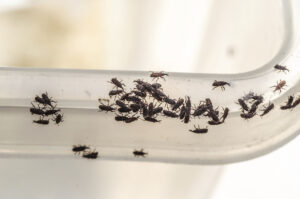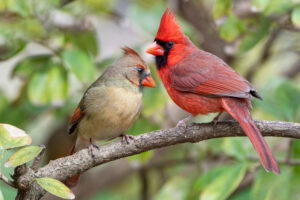How to Get Rid of Ground Moles with Vinegar

Introduction:
Ground moles can wreak havoc on lawns and gardens, leaving unsightly tunnels and mounds of dirt in their wake. While various methods exist to control these pests, using vinegar as a natural deterrent has gained popularity due to its effectiveness and eco-friendliness. In this guide, we’ll explore in detail how vinegar can be used to get rid of ground moles and restore the beauty of your outdoor space.
Understanding Ground Moles
Before diving into mole elimination techniques, it’s essential to understand the behavior and habits of ground moles. Ground moles are small mammals that spend most of their lives underground, tunneling through soil in search of food such as insects, grubs, and earthworms. Their tunneling activities can damage plant roots and create an unsightly landscape.The Benefits of Using Vinegar: Vinegar, specifically white vinegar, is a natural substance that can effectively deter ground moles. Its strong odor and acidic properties create an environment that moles find unpleasant, encouraging them to seek refuge elsewhere. Unlike chemical pesticides, vinegar is safe for the environment, pets, and humans, making it an ideal choice for mole control.
Methods of Mole Elimination Using Vinegar:
There are several strategies for using vinegar to eliminate ground moles from your property:
- Vinegar Spray: Create a solution by mixing equal parts of white vinegar and water in a spray bottle. Thoroughly spray the mixture on areas with visible mole activity, such as molehills or tunnel entrances. The strong scent of vinegar will deter moles from these areas, prompting them to move to a more hospitable location.
- Soaked Cotton Balls: Soak cotton balls in undiluted white vinegar and place them inside mole tunnels or near mole activity zones. The potent aroma of vinegar will permeate the tunnels, making them less appealing to moles. Replace the vinegar-soaked cotton balls regularly to maintain their effectiveness.
- Vinegar-soaked Rags: Similar to using cotton balls, soak old rags or cloth strips in white vinegar and strategically place them around your yard or garden where mole activity is prevalent. The lingering smell of vinegar will create an unfavorable environment for moles, encouraging them to leave the area.
- Vinegar Barrier: Create a barrier by pouring undiluted white vinegar around the perimeter of your lawn or garden. This barrier will prevent moles from entering or crossing into your property. Reapply the vinegar as needed, especially after rainfall, to maintain its potency.
- Vinegar-infused Plants: Some plants possess natural repellent properties that moles find disagreeable. Enhance this effect by watering these plants with a mixture of water and vinegar. Plants such as daffodils, alliums, and marigolds are known to deter moles and can be strategically planted around your yard or garden.
Precautions and Considerations
While vinegar is generally safe for use, there are some precautions to consider when using it for mole control:
- Avoid spraying vinegar directly on plants, as it may cause damage to foliage.
- Keep vinegar away from desirable plants to prevent unintended harm.
- Monitor mole activity regularly and adjust your vinegar application as needed.
- Be patient, as it may take time for moles to be completely deterred from your property.
Conclusion: Using vinegar to deter ground moles offers a safe, effective, and environmentally friendly solution for homeowners dealing with mole infestations. By employing methods such as vinegar sprays, soaked cotton balls, vinegar barriers, and vinegar-infused plants, you can effectively discourage moles from inhabiting your property. With persistence and consistency, you can reclaim your lawn and garden from these troublesome pests and enjoy a mole-free outdoor space once again.
Remember, creating a harmonious environment for both your plants and beneficial wildlife is key to a healthy garden ecosystem. By taking a holistic approach to pest management, you can strike a balance that promotes biodiversity while protecting your landscaping efforts.








